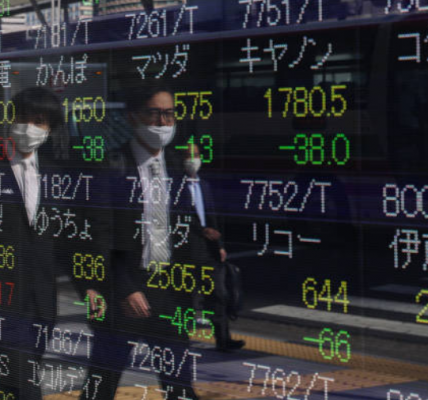Japan has been used for a long time to deflation and ultra-low interest rates, navigating decades of near-zero or negative inflation despite repeated policy experiments. However, since 2022, Japan has not escaped the global trend of rising inflation. While less pronounced than elsewhere, it appears more persistent, with core CPI (Consumer Price Index) climbing above 3%, driven by higher energy and commodity prices, and a weaker yen. This persistent price growth has placed inflation, for the first time in a generation, at the heart of Japan’s political debate.
The House of Councillors election on 20 July 2025, in which 124 of 248 seats will be contested, is shaping up to be a decisive moment for Japan’s macroeconomic trajectory. Early estimates show that the LDP-Komeito alliance has a 50% chance of keeping its majority, even though the government’s support rating has dropped below 30%. Rising rice and food prices have become politically sensitive, linking household living costs directly to BOJ (Bank of Japan) policy. The forthcoming election makes us wonder if Japan is finally leaving the “Japanification” era of deflation and stagnation, or if structural problems and slow decision-making will keep it stuck in economic stagnation.
The Election Context
Prime Minister Shigeru Ishiba’s administration is under pressure, with approval ratings dropping below 30% while disapproval rates climb to nearly 40% (Kyodo News). The public’s dissatisfaction is largely due to the government’s perceived failure to address rising living costs, particularly the steep rise of price of rice, while dismissing proposals such as a consumption tax cut as a relief measure.
The CDPJ, which is in the opposition, has suggested decreasing the BOJ’s 2% inflation objective. This makes them seem like they are protecting the buying power of households. Inflation has become a major issue in the election, and there could be changes to fiscal policy after the election: Cash handouts to households to offset inflation fatigue (similar to COVID-era stimulus payments), targeted subsidies on essentials (electricity, rice) to reduce perceived cost burdens, tax cuts, with discussions around reducing residence taxes or social security contributions to stimulate consumption.
These measures, if enacted, would test Japan’s fiscal sustainability and the coordination between fiscal and monetary policy, given the country’s already constrained budgetary space.
Inflation Dynamics: From Deflation to Stagflation Risks
Japan’s CPI hit 3.7% in May, the highest in two years, driven by food prices and the weak yen (Reuters). However, wage growth has not kept pace, resulting in a decline in real household incomes and diminishing domestic demand.
About two months ago, “the Bank of Japan kept its monetary policy unchanged but downgraded its growth outlook for the economy, reflecting great uncertainties over international trade” (NHK World). The BOJ revised its FY2026 GDP growth forecast down from 1% to 0.7%, while lowering its inflation forecast from 2.0% to 1.7%. “Foreign economies are slowing due to the impact of trade policies, which could lead to a decline in corporate profits in Japan,” said BOJ Governor Ueda, implying that domestic demand may diminish as exports decline, especially as the US reduces imports under new tariff measures. Adachi Masamichi, former BOJ economist, highlighted this as a “pause in policy normalization,” predicting the next BOJ rate hike only by 2027, reflecting caution amid high external uncertainty.
BOJ’s Monetary Policy Dilemma
The BOJ stated in a March policy statement that it is cautiously navigating a complex environment as year-on-year inflation (CPI, excluding fresh foods) remains elevated in the 3.0 – 3.5% range. This sustained increase can be explained as “as services prices have continued to rise moderately, amid nominal wage increases “, the phase-out of energy subsidies, and lingering effects from prior import price rises.
Possible post-election developments include gradual interest rate increases to manage inflation expectations, reduction of JGB purchases to slowly normalize the yield curve, careful management of yen volatility, as high rates in the US and Europe exert upward pressure on Japan’s imported inflation while a weaker yen risks further entrenching domestic price increases.
The BOJ faces a complex balancing act: taming inflation without suffocating already fragile domestic demand.
Despite this inflation, the Bank of Japan has kept its policy rate at 0.5%, wary of tightening prematurely amid global trade uncertainty, the impact of rising US tariffs on Japanese exports, and a weakening domestic growth outlook (Reuters).
On the fiscal front, Japan’s towering debt; now exceeding 250% of GDP, leaves little room for maneuver. Long-term structural reforms are necessary to address ingrained problems like low productivity growth and an aging population. However, as elections draw near, political pressure is pushing decision-makers to adopt temporary fixes meant to allay voters’ concerns about price increases.
Effective coordination between the BOJ and fiscal authorities will be crucial to managing inflation expectations while avoiding policy misstep that could trigger a bond market sell-off or a return to stagnation. Indeed, it could be that market volatility around JGB yields will persist, as seen recently when 30-year JGB yields spiked above 3%, reflecting investor concerns over post-election fiscal risks (Trading Economics).
Japan’s current environment underscores its core challenge: managing inflation sustainability while preserving financial stability and fostering growth within fiscal constraints.
What comes next
Of interest to other developed countries will be how Japan responds, having long served as a laboratory for deflation since the mid-1990s, for managing high levels of public debt -having breached 100% of GDP as early as 2000- and, since 2010, as the first advanced economy to experience a population slowdown, a fate that awaits many others.
Whether Japan’s inflation proves lasting or not depends on a handful of key indicators: how wage growth stacks up against productivity, whether core inflation holds beyond energy and food, and how the government sets its fiscal course after the election.
More than a domestic vote, the 20th July election will serve as a gauge of Japan’s ability to manage the shift away from its long-standing economic model; one marked by stagnation, deflation, and demographic headwinds.





